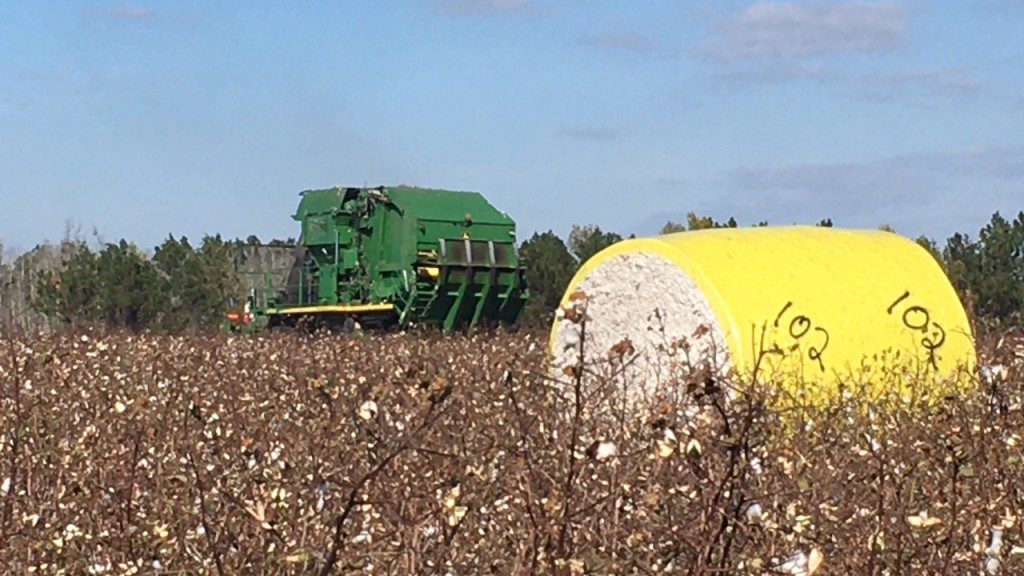This past week, corn growers are finishing up planting this year’s crop. Cotton and peanut growers are preparing to begin this planting season. Growers are burning down fields and finishing deep turning peanut ground. Rain was observed the first part of last week. Fungicide applications were applied to small grains. According to the drought monitor that was released last week, 72.9 % of the state of Georgia is not experiencing dry conditions. The crop progress report last week showed that 45% of the corn crop in Georgia has been planted and the 5-yr average is 51%.
In this weeks update topics are going to include minimum soil temperatures for row crops, corn populations, calcium in peanuts, buttercups in pastures, and pecan sawfly.
How late can we plant corn? Generally speaking, yields decline at a rate of ¾ bushels per day as you progress later in the planting window and can rise to about 2.5 bushels per day when planting after the optimal window. If corn planting is delayed into the summer yield losses become much more dramatic. Studies in Tifton indicate that stress and disease tolerant hybrids planted under irrigation in late-May to early June only yield approximately 50% of mid-March to early-April plantings.
What are the minimum soil temps for row crops? When tax day arrives, producers want to start planting. The forecast this week calls for a morning or two in the lower 50’s. Below is the NWS 7-day forecast and GDD60 accumulation for the Moultrie, GA area. The soil temps for the last couple of days are also shown.
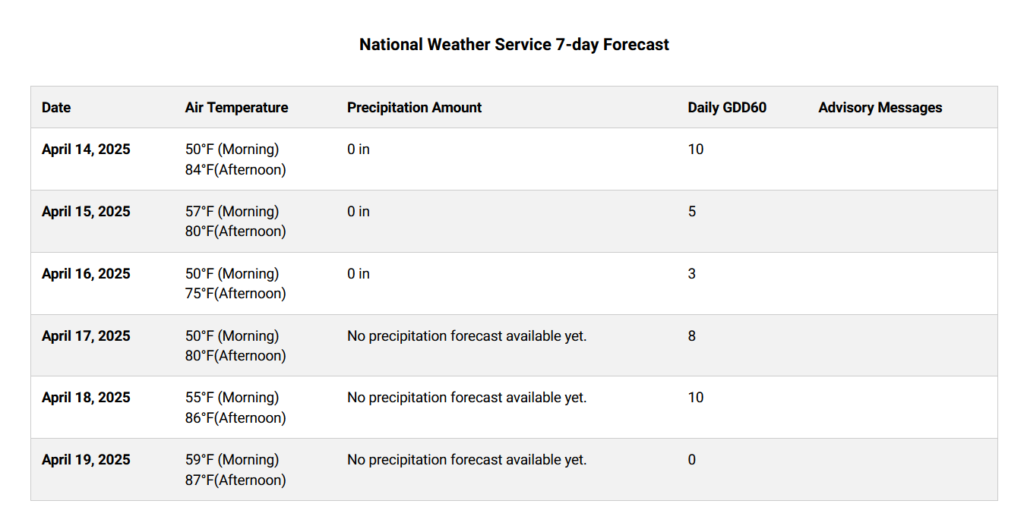
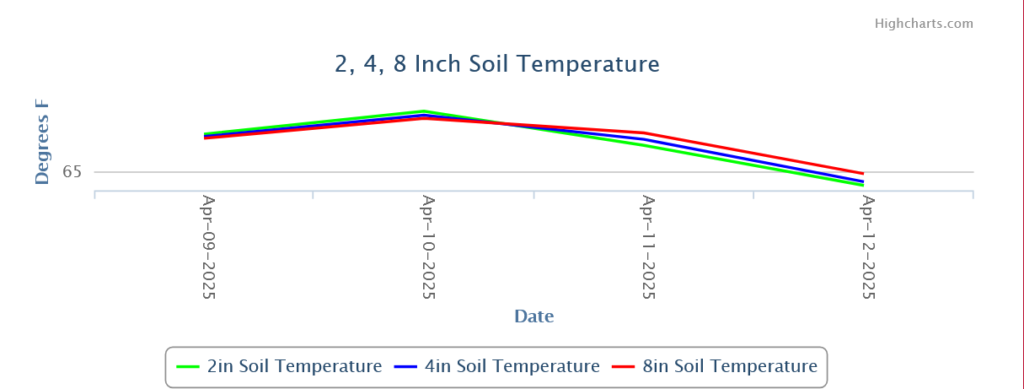
For peanuts: The soil temperature at the 4” depth needs to be greater than 68 Degrees F for 3 consecutive days without risk of a cold front after planting.
For cotton: Generally, planting can safely proceed when the 4-in. soil temperatures reach 65 °F for 3 days and warming conditions are projected over the next several days (or approximately 50 DD-60s within 5 days of planting). Below is the 5 day DD60 forecast for Moultrie from the NC State Cotton Planting Conditions Calculator.

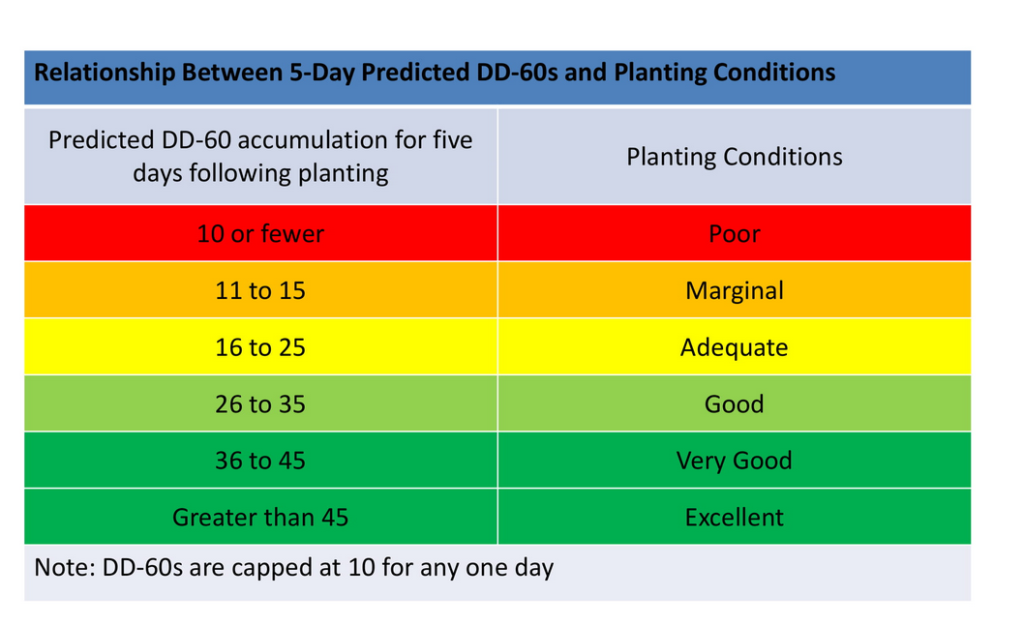
Grain sorghum: Grain sorghum can be planted in the spring any time after mid-morning soil temperatures at seeding depth reach 65 F for five consecutive days.
Soybeans: The UGA Soybean production guide mentions that early season soybeans (EPS) can be planted after the last frost date. Research has indicated that the optimum soil temperature for soybean emergence is 82 to 85 F;
however, there is a wide range of soil temperatures at which soybean will emerge. Soybean can be planted in soils as cold as 42 F and as warm as 95 F. When planting in cold soils, between 42 and 59 F, emergence may take as long as 14 days after planting. As soils warm above 59 F soybean emergence can be as fast as 4 days after planting, depending on soil moisture status.
Pearl millet for grazing: Plantings of warm season annual grasses can be made in the spring as soon as the soil temperature (at a two inch depth) warms to 65º F.
How much nitrogen do I need for summer annuals that I am going to graze?

I still have some ryegrass after my burndown.. I had a comment or two on this subject over the last couple of weeks and have spoken to Dr. Eric Prostko about this. He recommends a split shot of a 3lb paraquat (32 oz/a plus NIS) about 10 days apart.
I had a couple of questions about corn populations last week. Table 4 shows the approximate plant populations based on row-spacing and plant spacing within a row. This is from the UGA Corn production guide.

Calcium in peanuts! Calcium is a topic that keeps on coming up. Dr. Scott Monfort, UGA Peanut agronomist, recommends the following.
For fields below 750-800 lbs/A of calcium based on calcium pegging test:
Gypsum is worth the investment even at $50.00/A for 1000 lbs. You could reduce the amount applied to 750-800 lbs/A to save some money.
Lime is another way growers can get their calcium needed for the crop as long as they need a pH adjustment. They need to apply prior to planting.
The only other products I would recommend are the following:
For fields above 800 lbs/A:
Growers can use the following products: — Need to mention that the products below will help reduce the risk of ca deficiencies for peanut but will not help in building ca in the soil for the next crops.
- Top Flow at 10-15 gal/A applied at planting or early bloom and watered in immediately after. You will likely increase pH by ½ point.
- Calcium Chloride at 10 gals/ per acre injected through the pivot at 50-60 DAP
- Calcium Thiosulfate at 20 gal/A through the pivot at 50-60 DAP
Remember, Gypsum still the best option on Seed Peanuts.
All other products will not supply enough calcium for seed peanuts. If it was me, I would not stand behind any other product than the 4 above.
“What are those yellow flowers in my pasture?” The yellow flowers may be buttercup. Buttercups (Ranunculus spp.) are broadleaf, cool-season weeds. Hairy buttercup is a winter annual with erect, hairy stems and leaves. Characteristics of this plant include Basal leaves with long leaves pinnately divided and lobed. Often producers call about this weed when they see the yellow flowers all over the pasture. This pest reproduces by seed so controlling the seed bank is key. They are often found when stands are starting to thin out.
Buttercups have an irritating oil that releases a toxin, protoanemonin, when the plant is crushed through chewing. The toxin can cause blisters on lips and in the mouths of grazing livestock. Signs of ingestion poisoning include diarrhea. Mature buttercups – those that are at the flowering stage – contain more toxin than immature plants. Fortunately, buttercups are so bitter that livestock generally avoid eating them.
According to the UGA Pest Management handbook herbicide options include 2,4-D, Cimmarron Max or Plus, Crossbow, Grazon Next, Grazon P+D, metsulfuron, Pastora, and triclopyr. Please contact your local county Extension agent about control options and we do not endorse or guarantee the performance of any products mentioned.

Pecans: I got a few pecan questions this week. I received a picture or two of sawfly in pecan. Below is an example of this insect. If you review past information from the UGA pecan team, sawfly do not really cause much of a problem in most cases, not unless, they have caused considerable defoliation on young, small trees. Sawflies are gregarious feeders, which means they feed in groups. Two species of sawflies are common on pecans. The two species are Periclista marginicollis (Norton) and Megaxyela major (Creson). Larvae of P. marginicollis feed on the underside of leaflets during the spring, leaving small holes in the foliage. M. major larvae generally consume the entire leaflet. (Source: Texas A and M) A sawfly is actually the larvae of a wasp. If you decide to control sawflies, products for caterpillar control are effective against them, with the exception of Intrepid. READ MORE

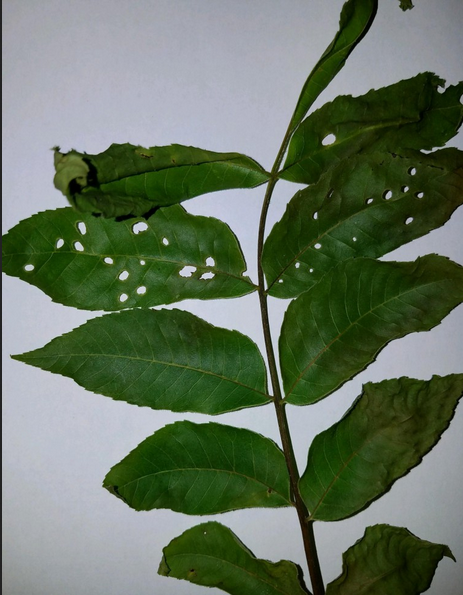
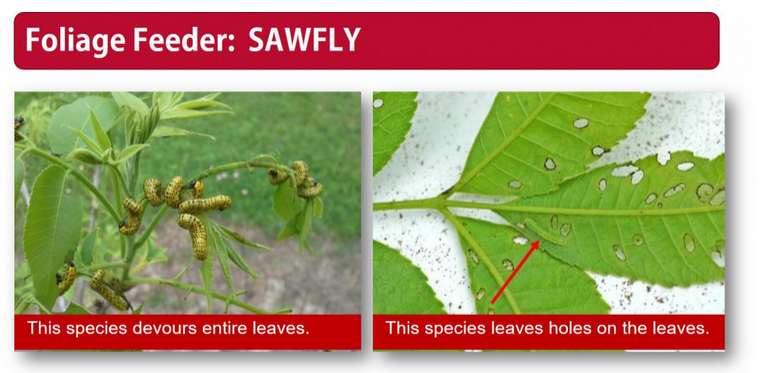
Over the last couple weeks we had the opportunity to plant 2 corn variety trials. One location was the UGA Corn Variety trial at the Sunbelt Ag Expo. Several county agents across the state plant the same 10 varieties in various yield environments to evaluate yield potential.The 10 varieties include: Dekalb 7045, Dekalb 6835, DG60TC45
DG 58TC94, Pioneer 1608, Pioneer 17677, Cropland 5911, Cropland 5893, Agratech 704VT2P, and Agratech 85VT2P. We planted 17 varieties from AgriGold, Dekalb, DynaGro, Innvictis, Integra, Revere, NK, and Seedway, at the second irrigated location last week.
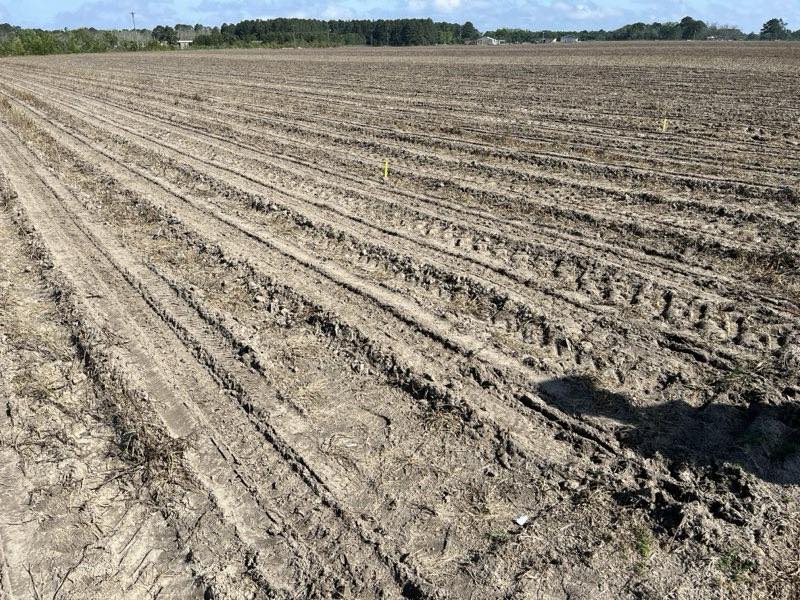

If you have any questions please contact your local county Extension agent.
Have a great week,
Jeremy M. Kichler
Colquitt County Extension Coordinator
The University of Georgia Cooperative Extension does not endorse or guarantee the performance any products mentioned in this update.
